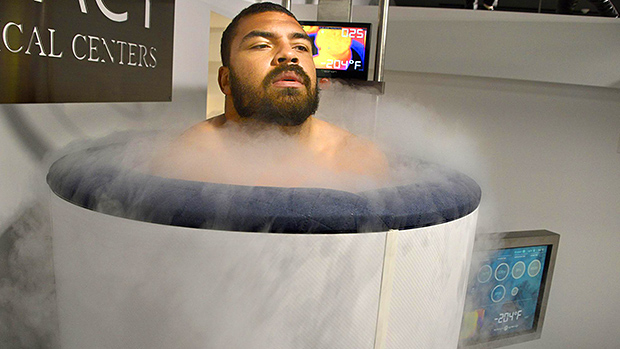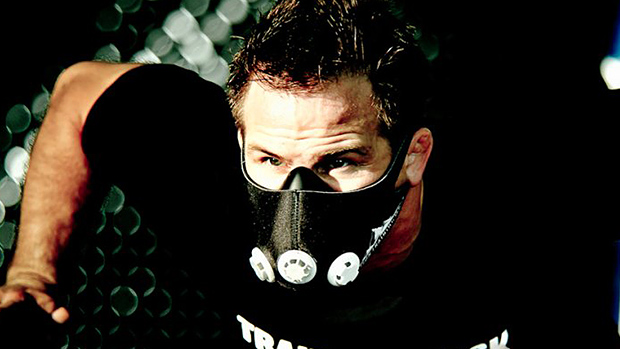Cryotherapy and Muscle Recovery
Should you really be paying money to freeze your ass off for three minutes after a workout? With cryotherapy centers popping up everywhere and "experts" from various health and wellness fields touting it, you might be wondering if it's time to give cryotherapy a try.
Other versions of cryotherapy, such as cold-water immersion, have been around for decades and have been shown to slow cell metabolism and reduce tissue damage following bouts of muscle-damaging exercise. Here we're going to focus on whole-and partial-body cryotherapy, which involves stepping into a dry-chill chamber set at a temperature ranging from -130 to -180 degrees Fahrenheit and freezing your butt off for up to three minutes.
Does it enhance muscle recovery post-workout? Does it reduce inflammation to any measurable extent? Fortunately, scientists have recently begun exploring the world of cryotherapy.
Note: It's important to remember that cryotherapy can be used to reduce inflammation in a variety of contexts, but for our purposes here, the primary interest is in the treatment's ability to minimize muscular damage and inflammation and subsequently enhance post-workout recovery.
In one of the first studies to empirically examine the effects of whole-body cryotherapy on muscular recovery, researchers had two groups of participants complete two bouts of damaging exercise for the hamstring muscles (squat jumps, plyometric, and eccentric leg curls) on two separate occasions, separated by ten weeks.
After the control bout, the subjects received no post-workout treatment whatsoever. After the treatment bout, the subjects completed whole-body cryotherapy every day during the five-day recovery period. They looked at blood parameters, perceived pain sensation, and squat jump height during the recovery period to compare muscular recovery time.
The researchers observed no statistically significant differences in recovery when whole-body cryotherapy was used, suggesting that it doesn't enhance functional muscular recovery. The scientists noted that additional research in the field with a different experimental design would be worthwhile in the future.
Researchers examined the impact of partial-body cryotherapy on muscular recovery in a similar manner. (Partial-body cryotherapy is where you keep your head up out of the cold chamber.)
Participants were randomly divided into two groups and subjected to a relatively intense interval jump training session. One group was then exposed to three minutes of partial-body cryotherapy at -110° C, and the second group was exposed to three minutes at 21° C (basically room temperature). Muscle thickness, peak torque, and muscle soreness were measured at 24-hour intervals for 96 hours immediately following training and cryotherapy exposure.
Peak torque returned to baseline in the cryotherapy group within 96 hours, and had still not returned in the non-cryotherapy group. Muscle soreness returned to baseline in the cryotherapy group at 72 hours, but didn't return until 96 hours for the non-cryotherapy group. These results indicate that partial-body cryotherapy may assist in muscular recovery after a bout of intense exercise.
Yep, these two studies provide contradictory information regarding the efficacy of cryotherapy to aid in muscular recovery following exercise.
There are marked differences between the studies though, such as the fact that the first study tested the same group of subjects under both conditions, and the second study tested one group under each condition. Also, slightly different markers of recovery were examined in each case.
All of this means that more research is needed in the field of cryotherapy. For now, it's clear that cold therapies can be effective for recovery, and if you find them to be effective, there certainly isn't any reason to stop doing it. As with most contentious fitness-related topics, it's best to maintain a healthy dose of skepticism towards overt claims of success by those who stand to gain financially from any new fitness trend.
- Ferreira-Junior JB et al. One session of partial-body cryotherapy (-110 °C) improves muscle damage recovery Scand J Med Sci Sports. 2015 Oct;25(5):e524-30. PubMed.
- Fonda B et al. Effects of whole-body cryotherapy on recovery after hamstring damaging exercise: a crossover study. Scand J Med Sci Sports. 2013 Oct;23(5):e270-8. PubMed.




